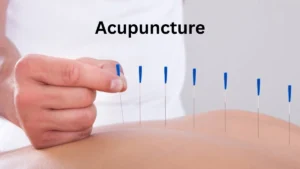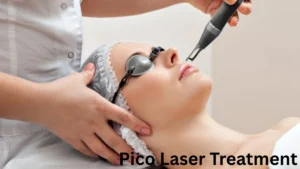Acupuncture is a traditional healing practice rooted in Traditional Chinese Medicine (TCM). It involves inserting very thin needles into specific points on the body to promote natural healing, balance energy flow, and relieve various health conditions. Over the years, it has evolved to gain recognition in modern healthcare, offering a bridge between alternative and conventional medicine.
What Is Acupuncture?
Acupuncture is a non-invasive treatment used for centuries in China and now practiced worldwide. It involves the insertion of fine, sterile needles into targeted areas of the body, called acupoints. The goal is to stimulate the body’s own healing processes by restoring the natural flow of energy, known as “qi”.
Top 7 Powerful Benefits of Acupuncture
| Benefit | Description |
|---|---|
| 1. Pain Relief | Alleviates chronic pain conditions like back pain, arthritis, migraines, and joint discomfort. |
| 2. Reduces Stress & Anxiety | Calms the nervous system, lowers cortisol levels, and promotes emotional well-being. |
| 3. Improves Sleep Quality | Helps with insomnia and promotes deeper, more restful sleep by balancing energy flow. |
| 4. Enhances Digestive Health | Supports conditions like IBS, nausea, and bloating by regulating gut function. |
| 5. Boosts Immune Function | Strengthens the immune response and reduces the frequency of illness. |
| 6. Supports Hormonal Balance | Helps regulate menstrual cycles, reduce PMS symptoms, and support fertility. |
| 7. Promotes Overall Wellness | Encourages energy balance, mental clarity, and improved quality of life. |
How Acupuncture Works
Traditional Chinese Medicine (TCM) Perspective
In TCM, it is believed that qi (pronounced “chee”) flows through meridians or energy pathways in the body. Blockages or imbalances in this flow can result in illness or pain. Acupuncture helps by rebalancing qi and restoring harmony.
Western Medical Perspective
Modern science suggests that acupuncture works by:
- Stimulating nerves, muscles, and connective tissues
- Enhancing blood circulation
- Triggering the release of endorphins and other natural painkillers
Both views converge on the idea that acupuncture helps to activate the body’s healing response.
Common Acupuncture Techniques
- Manual Acupuncture: Traditional method using hand-manipulated needles
- Electroacupuncture: Needles are stimulated with a mild electric current to enhance the effects
- Needle Manipulation: Twisting, heating, or tapping needles for increased stimulation
- Cupping and Moxibustion (optional additions): Often combined with acupuncture to further boost qi flow
Read more: Osteoporosis Treatment: Effective Ways to Strengthen Your Bones and Prevent Fractures
Benefits of Acupuncture
1. Pain Relief
Acupuncture is widely recognized for treating various types of chronic pain, including:
- Back and neck pain
- Osteoarthritis
- Headaches and migraines
- Joint and muscle pain
2. Stress and Anxiety Reduction
Acupuncture helps regulate the nervous system, promoting relaxation and reducing symptoms of stress, anxiety, and insomnia.
3. Digestive and Hormonal Health
It supports overall wellbeing by helping with:
- Nausea and vomiting
- Menstrual cramps and PMS
- Infertility support (often used during IVF cycles)
4. Immune System Boost
Regular sessions may also strengthen the immune system, helping the body resist illness and promote long-term wellness.
Conditions Treated with Acupuncture
- Chronic pain disorders
- Tension and migraine headaches
- Stress, anxiety, and depression
- Insomnia and sleep disorders
- Digestive issues (IBS, nausea)
- Respiratory conditions (asthma, sinusitis)
- Fertility and menstrual problems
Read more: Dry Cough Treatment: Best Remedies, Medications, and When to See a Doctor
What to Expect During an Acupuncture Session
- Initial Consultation: The practitioner will assess your health history and symptoms
- Treatment Process: Fine needles are inserted into acupoints and left in place for 15–30 minutes
- Sensation: You may feel a slight tingling, warmth, or heaviness—typically not painful
- Post-Treatment: Many people feel relaxed or energized afterward
Is Acupuncture Safe?
Generally Safe
Acupuncture is safe when performed by a licensed practitioner using sterile, single-use needles.
Potential Side Effects
- Mild soreness or bruising at the needle site
- Temporary dizziness or fatigue
- Rare risks: infection or organ injury (if not properly administered)
Choose a Qualified Practitioner
To ensure safety:
- Confirm the acupuncturist’s certification and license
- Ensure they follow strict hygiene protocols
- Read reviews or ask for referrals
Read more: Hair Implant Surgery: The Ultimate Guide to Restoring Your Hair
Scientific Evidence and Support
Many organizations support acupuncture for certain conditions:
- World Health Organization (WHO): Endorses acupuncture for over 30 conditions
- National Institutes of Health (NIH): Recognizes its role in pain relief and symptom management
Clinical studies have shown strong evidence for its effectiveness in pain management, and growing evidence for mental health and digestive issues.
Conclusion
Acupuncture is a powerful, time-tested therapy that combines the wisdom of Traditional Chinese Medicine with modern healthcare insights. Whether you’re dealing with chronic pain, emotional stress, or simply want to improve your overall health, acupuncture may offer a safe and effective solution.
Before starting treatment, consult with your healthcare provider and choose a qualified practitioner for the best results.
Frequently Asked Questions (FAQs)
Q1: Does acupuncture hurt?
No, most people feel minimal discomfort. The needles are extremely thin.
Q2: How many sessions will I need?
This depends on your condition. Some feel relief after one session, while others may need multiple.
Q3: Can I combine acupuncture with other treatments?
Yes, it often complements conventional medicine, physical therapy, and herbal remedies.
Q4: Is it covered by insurance?
Many insurance plans now offer partial or full coverage for acupuncture—check with your provider.





